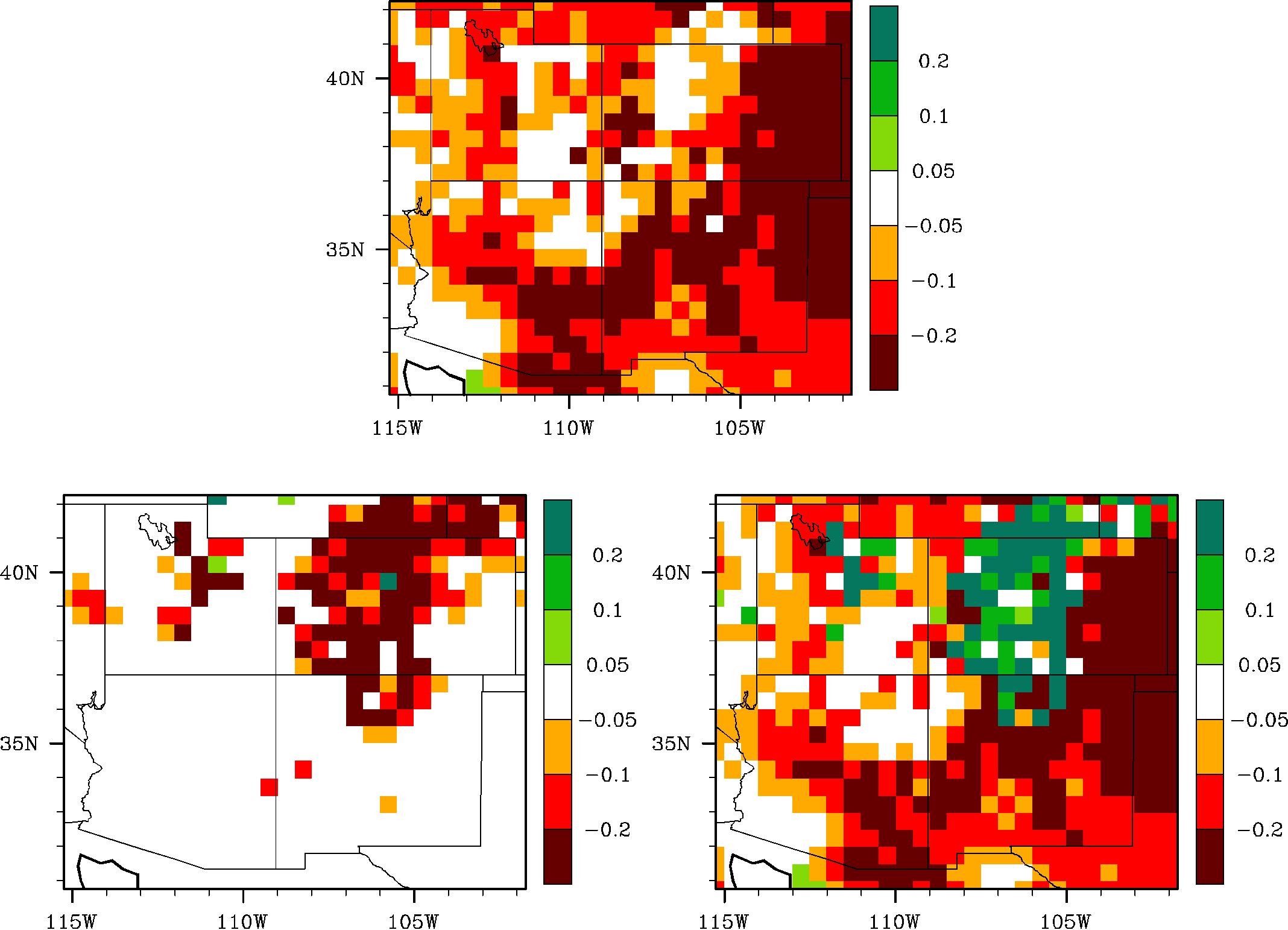
 |
||||
| |
||||
Projected Vegetation Responses overthe Southwest US to Climate ChangeCollaborators: Zhengyu Liu, Jack Williams, Dave Gutzler, Adrien Mauss Data Product: Mapping Site for Southwest Species Projections (Maxent) Funding: DOE NICCR Publications: Notaro, M., A. Mauss, and J.W. Williams, 2012: Projected vegetation changes for the American Southwest: Methods: Output from the IPCC AR4 global climate models is used to force the Lund-Potsdam-Jena dynamic global vegetation model over the Southwest United States. The goal is to determine how climate change might impact vegetation and natural fires in the region. In addition, using climate envelopes, the modern and future distributions of the climate spaces of hundreds of woody species are determined to assess how their distributions might respond to climate change. Results from the DGVM and climate envelope species analysis are being compared. Key finding: A substantial loss of vegetation cover, including high-elevation evergreen forests, is likely later this century, while many woody species will be lost from the region as the climate changes faster than the forests can respond. |
||
 |
Projected changes in total vegetation cover fraction (top), tree cover fraction (lower left), and grass cover fraction (lower right) by the end of the century based on LPJ simulations forced by IPCC climate model output for the A2 emission scenario. A significant reduction in total vegetation cover is likely, including a loss of high-elevation evergreen forests, which are replaced by grasses, and a loss of Arizona-New Mexico grasslands. | |